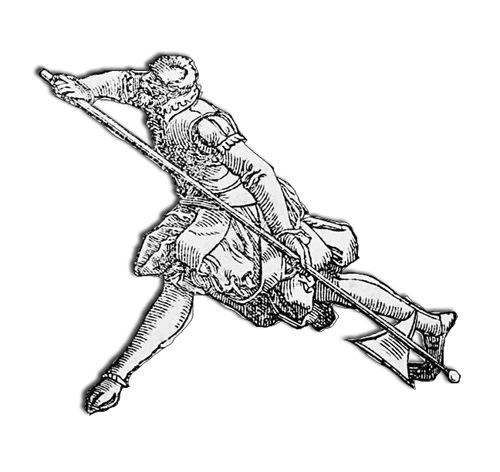Nebenhut
Contents |
Near Guard
Longsword
On of Meyer's secondary guards, the near guard is a low side guard which can be the starting point for an unterhauw or krumphauw.
Meyer doesn't provide a visual depiction of the guard, and other sources are equally vague, in fact there is evidence to suggest that early masters considered any low side guard to be a variation on nebenhut, including schranckhut, wechsel, or anything else.
For our purposes the nebenhut on the right will be a left foot forward, forward weighted posture in which the sword is point down by the right side with the false edge facing toward the fencer. It will be used like an 'orthodox' nebenhut, as well as like an 'orthodox' schranckhut.
The guard can also be weighted backward, away from the opponent, as seen in the image here.
Polearm
An unusual guard, and an extreme extension of the trailing rudder guard in some ways, and reminiscent of the Zornhut from the longsword or dussack.
Place the right foot forward and grasp the staff in an reversed left lead grip, right on the bases as usual. Turn the body around so the hips are facing away from the opponent and the staff goes all the way past the left side of our body so that it is almost pointing back toward our opponent (only behind us!) This is usually the extreme point of a catch or wind up for a stroke.
Reverse Nearguard
[non canonical name]
A transitional position, left leg forward and turned out, arms in the same position as a trailing rudder guard. This is typically encountered when moving from high guard to a cut from below on the left with no step.
If we looked over our shoulder or stepped back we would be in nearguard, so for now we’ll call this “reverse nearguard”.


